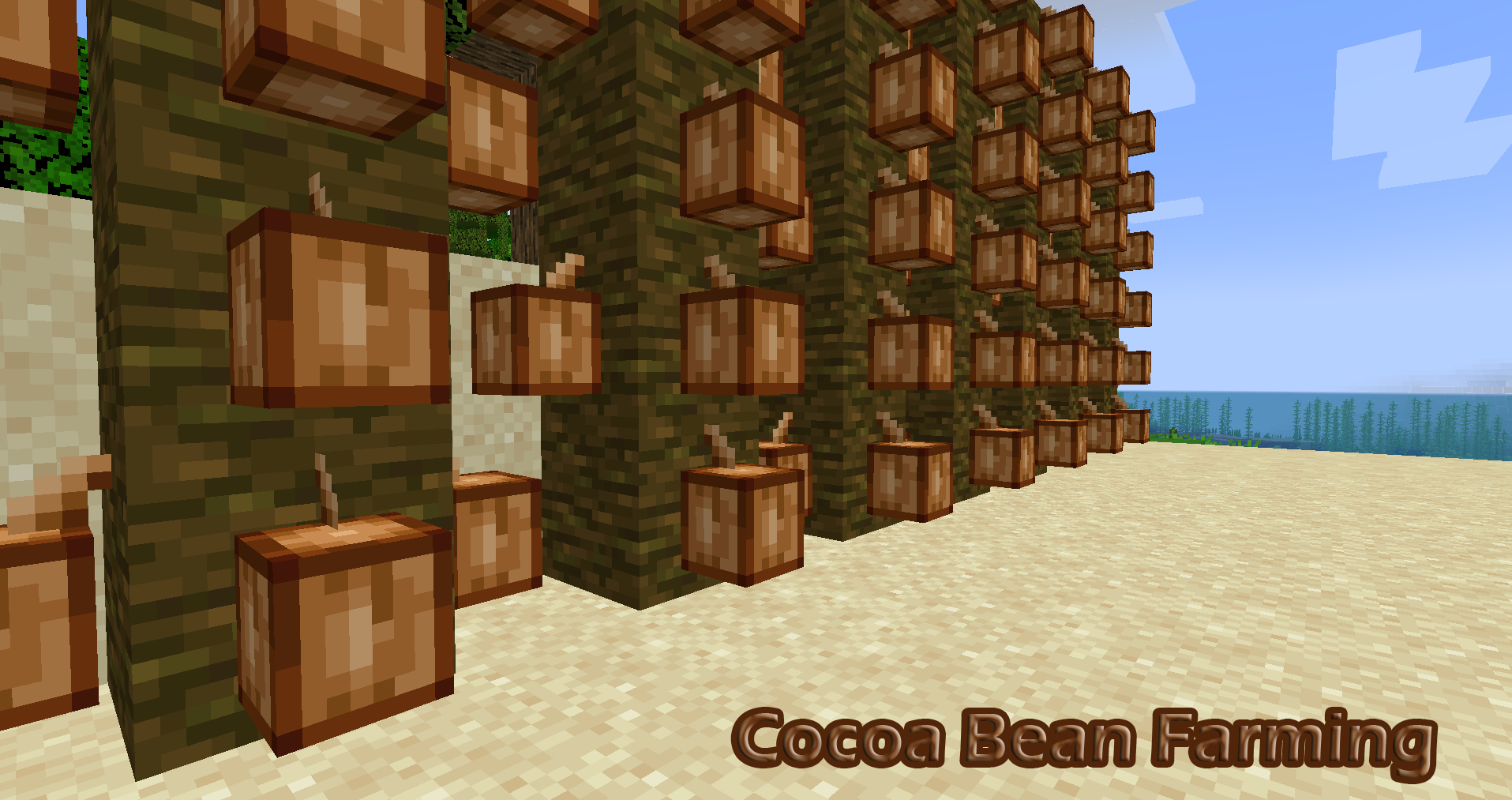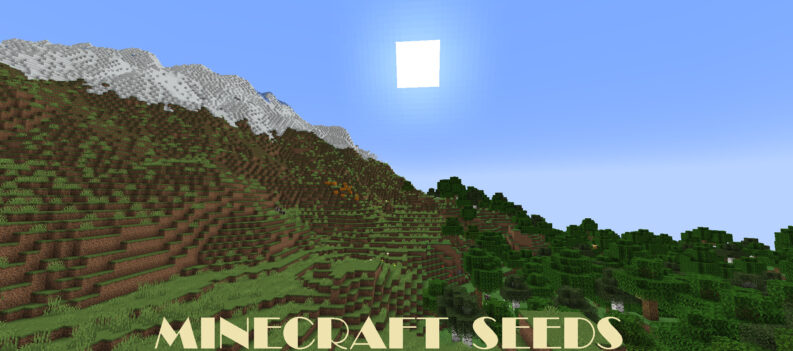In Minecraft, building personalized farms is the best and most efficient way to obtain valuable resources quickly without leaving the comfort of your base. Minecraft farms can be constructed to collect blocks, item resources, food, mobs, and even experience points. One of these farms is the cocoa bean farm. Cocoa beans are a food ingredient obtained from a cocoa plant in the game. These can be used for various purposes in the game, but one thing to note about cocoa beans is that it is a rare resource as it only spawns in a single biome throughout the overworld. So, if you are planning on building your very own cocoa bean farm in Minecraft, you will need to know where they are, how to obtain them, and how to make your cocoa bean farm in your base.

What Is A Cocoa Bean in Minecraft?

Cocoa beans, as stated earlier, are a slightly valuable resource obtained from cocoa pods. These cocoa beans can be used to craft a few items in the game, namely cookies and brown dye. Cocoa beans are considered a rare resource as they only grow on jungle logs. You can obtain your first set of cocoa beans from harvesting cocoa pods in the jungle biome. However, they can also be obtained when you fish for treasure inside the jungle biome or when you get lucky finding three cocoa beans that the Wandering Trader is selling in exchange for an emerald. Cocoa beans can be harvested from cocoa pods that grow on the trunks of normal-sized naturally-generated jungle trees found inside a jungle biome.
How To Grow Cocoa Beans in Minecraft?

Unlike other plant growth in Minecraft, cocoa beans are a special case as they can only grow on jungle logs. More specifically, cocoa beans will grow on the sides of a jungle log so long as at least one empty air block on the space next to the jungle log. Since cocoa beans can grow anywhere regardless of light level, these can be grown even inside the Nether. If you plan on building a cocoa bean farm, then learning how to grow them should be the first step in achieving that.
Growing cocoa beans is easy and will only require at least one jungle log and one cocoa pod in your inventory. Once you have obtained a cocoa pod and a jungle log from the jungle biome, you can then bring them back to your base to be reproduced.
- Start by placing down the jungle log in an open area, preferably somewhere without any blocks next to it which could hinder its growth.
- Then plant the cocoa pod on the side of the jungle log and wait for it to grow. You can also hasten its growth rate by using a bone meal on the cocoa pod. As a cocoa bean has 3 stages of growth, you might need to use two bone meals or more to fully form a single cocoa pod.
- Once the cocoa bean is fully grown, you can break it down with any tool in your inventory but using an axe is the quickest way. Also, since the cocoa bean has three growth stages, it is best to break it only when it is in its final stage or its fully grown stage. A fully grown cocoa pod will drop 2 to 3 cocoa beans which you can replant to produce more. Destroying a cocoa pod before it has reached its last stage will only drop 1 cocoa bean which means it is futile to harvest it in any stage before the final one.
How To Make A Cocoa Bean Farm in Minecraft
Once you have learned how to grow cocoa beans, it is time to make a cocoa bean farm for your base. Remember that the jungle logs on which the cocoa beans will grow do not need to be attached to an actual living jungle tree to thrive but only on any harvested jungle log. They can easily be created by strategically arranging the jungle logs to optimize the jungle log’s growing space. Therefore, it is pretty easy to build large cocoa bean farms and mass-produce them if necessary.
To create an optimal non-automated cocoa bean farm, start by clearing a 6×6 wide area, free from any block or hindrances. Then using four jungle logs, place them one by one in a specific location. The first jungle log must be placed on the fourth column of the second row, and the second jungle log should be placed on the second column of the third row. Then place the third jungle log on the fifth column of the fourth row. And lastly, place the fourth and final jungle log on the third column of the fifth row.
The image below will represent what the basic non-automated cocoa bean farm will look like in a 6×6 area:

Once you have placed the four jungle logs, this pattern can be repeated vertically and horizontally by overlapping one square laterally or horizontally to create larger cocoa bean farms. The jungle logs can also be extended vertically to become yield efficient and allow more space for other farms; however, the taller they become would be progressively more difficult to harvest and replant. Therefore, an optimal cocoa bean farm should be no more than six blocks tall from the ground up.
A thing to note when creating your cocoa bean farm is that cocoa beans are fragile and will break if the player or a piston strikes the cocoa beans or the jungle log on which the cocoa bean is growing, if the growing cocoa beans get submerged in water, or if the jungle log itself gets destroyed by any method. You can then use this method to create an automatic cocoa bean farm using any of these given methods to break or harvest fully grown cocoa beans automatically. And although creating large cocoa bean farms seems like a great idea, it is also impractical considering the speed at which the cocoa pods grow and how many cocoa beans can a single fully grown cocoa pod yield.
But when it comes to automated farming—considering how each cocoa pod will need to be personally replanted by the player—there are no available designs to create a fully automatic cocoa bean farm for now. However, various designs are dedicated to semi-automatic cocoa bean farms, which you can use to automatically harvest all the fully grown cocoa beans with a push of a button and are mostly relatively cheap to build. Methods such as piston-harvesting and waterlogging are famous for most automated farms, including cocoa bean farming. You can use any method available to easily harvest cocoa beans and lessen the effort rather than collecting them all by hand and replanting them again one by one.
















